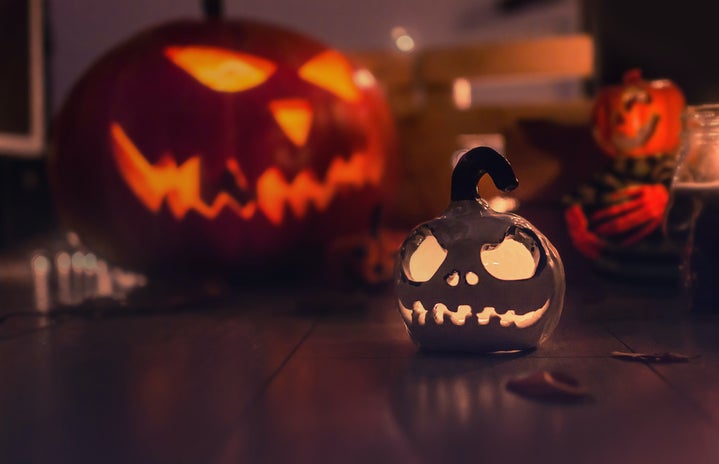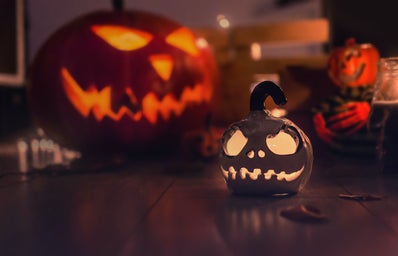You already know how capitalism has taken over holidays such as Valentine’s Day and Christmas, drowning us in themed products, stuffed animals, and half-decent chocolate. While some may argue that Halloween is SUPPOSED to be all about dressing up in costumes and “trick-or-treating,” this was not the original intent, and it ignores the rich history and culture of Halloween.
The History
The celebration of Halloween, originally known as All Hallows’ Eve, started as a tradition among the Celtic people (who lived around 2,000 years ago). They believed that the day that translates to November 1st of the modern-day Gregorian Calendar was the beginning of the new year, as it marked the transition from Harvest season to winter. Since they associated winter with human death, they believed that the veil between the living and the dead blurred, allowing the dead to walk the Earth for a night.
As a result of this connection, they also believed that the Druids (Celtic priests) would be able to predict the future easier. These predictions were important, as they provided comfort to the people throughout the long winter months. In order to celebrate this event, the Druids would create a large bonfire while the people dressed in animal skin “costumes” and sacrificed crops and animals to the Celtic gods. Afterwards, they would take fire from the bonfire and light their hearths with it, protecting them from the coming winter. These festivities were collectively known as Samhain (pronounced sow-in).
However, this history was almost entirely erased when the Romans conquered the Celtic land, weaving their own traditions into the Celtic festivities until all anyone remembered was the Catholic tradition. In order to interlace the Pagan holiday of All Hallows’ Eve with some form of Christian observance, Pope Boniface IV created All Saints’ Day on November 1st, making Halloween a Christian holy eve.
Modern Day
As the Irish immigrated to North America (mainly the USA), they brought their traditions with them. However, over the years, Halloween has been watered down, from a celebration of the Harvest to a day for parties.
“One quarter of the candy sold annually in the USA is sold at Halloween.” (source History.com) Candy companies use Halloween as a way to market and sell more candy, with some companies going as far as to change their packaging to suit Halloween “themes.”
This brings us to symbols of Halloween. As we near October 31st, pumpkins, Jack-O-Lanterns, and decorations of skeletons and ghosts begin to appear along the streets. Cheap plastic ornaments have replaced the traditions of the Celtic. You can see it in almost every store–Halloween decorations appearing weeks before even October 1st. These stores capitalize on important symbols that have now lost their meaning.
An example of the urbanization of Halloween comes in the form of monsters. Popular literature monsters like Frankenstien and Dracula have come to be associated with Halloween, even though they have no roots in the ancient traditions of Halloween. Instead, these “monsters” are used to sell more products.
Costumes
Finally, the biggest sign that consumerism has overtaken Halloween is the costumes. Traditionally, costumes were worn to confuse or frighten the spirits when the veil between the living and the dead was thinning. These costumes also allowed people to play tricks on each other and blame it on the spirits (a tradition, though now slightly different, that has carried through to the 21st century).
Perhaps the most convincing argument for the commercialization of Halloween can be found in costumes, which are, much too often, cultural appropriation. Costume companies are so desperate for more profit that they steal the cultures of others and market them as “cute” costumes to wear for Halloween. These companies are using only the parts of these cultures of which they can profit, making cheap imitations of cultural dress (such as a “Pocahontas” costume), without even making an attempt to honour the rest of the culture. They also encourage people outside the culture to buy these costumes, feeding into the negative and often racist assumption that these cultures are only useful for their “costumes.” These cheap costumes are disrespectful and inappropriate; sometimes they are even used by people to make fun of a certain culture. (For more information on Cultural Appropriation, check out Fatima’s article later this week!)
Costumes that appropriate culture are not the only costumes that are problematic. Over-sexualized costumes also point to consumerism. Costumes such as “sexy nurse” or “sexy cat” are of course sexist, but they also stray far away from the ideals of All Hallows’ Eve. These costumes promote sexualization of mainly women and often cost the same amount as (or more than!) a traditional “nurse” or “cat” costume which contains more fabric. A quick search on Amazon for “Halloween costume woman cat” brings up a variety of different costumes. Of these costumes, one is called “Women’s Wicked Kitty,” a hypersexualized cat costume, for $98.15, and a “Women’s Cozy Leopard,” basically a hoodie that looks like a cat, for $74.99, both from the same retailer. These costumes show that companies will do whatever it takes to gain as much profit as they can.
Taking into account the rich history of Halloween, of which many people are not aware, you can clearly see Halloween’s descent into consumerism. While this doesn’t make Halloween a bad holiday, it’s always important to recognize from where our favourite traditions evolved.
References
https://www.history.com/topics/halloween/history-of-halloween


